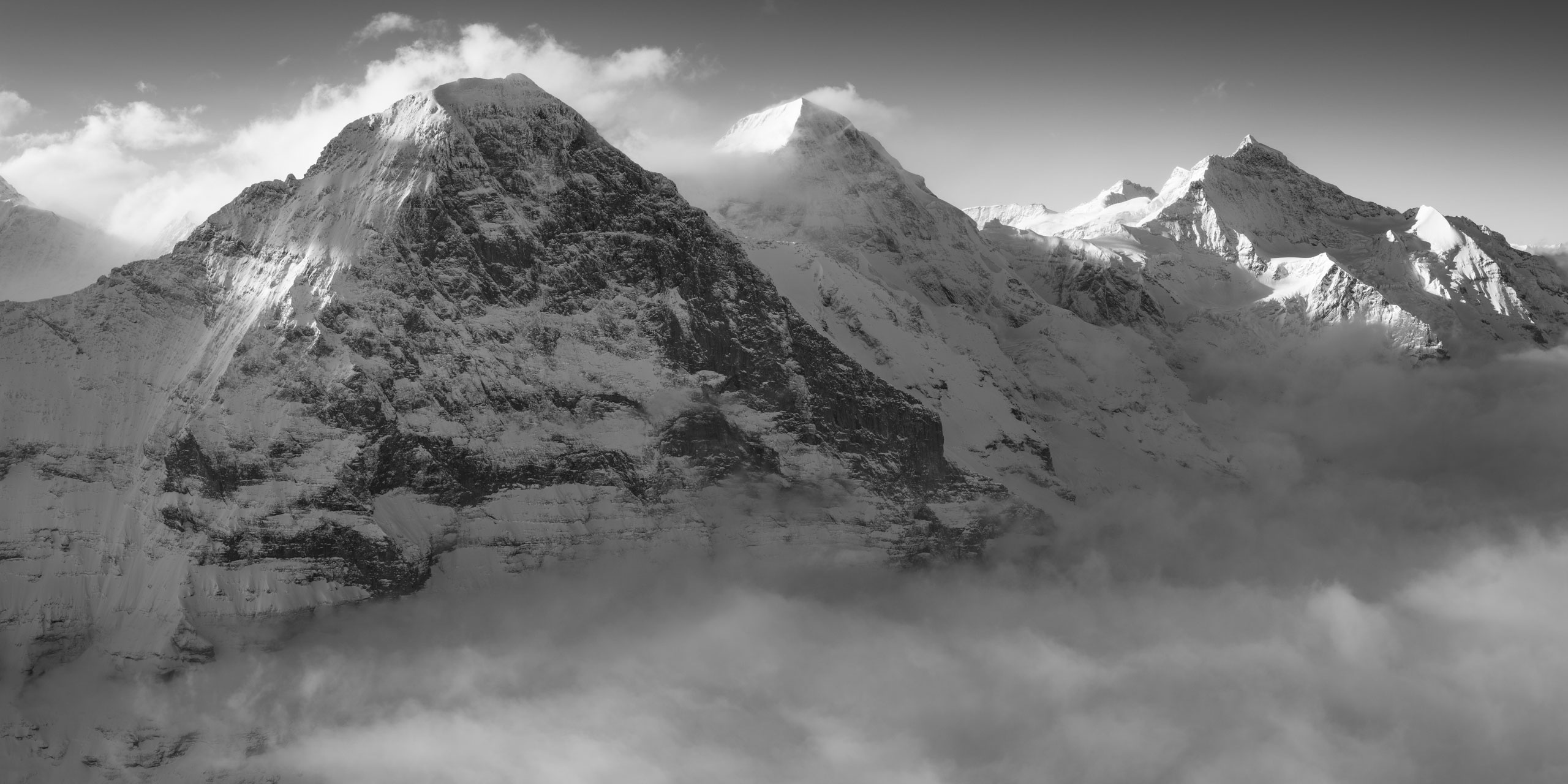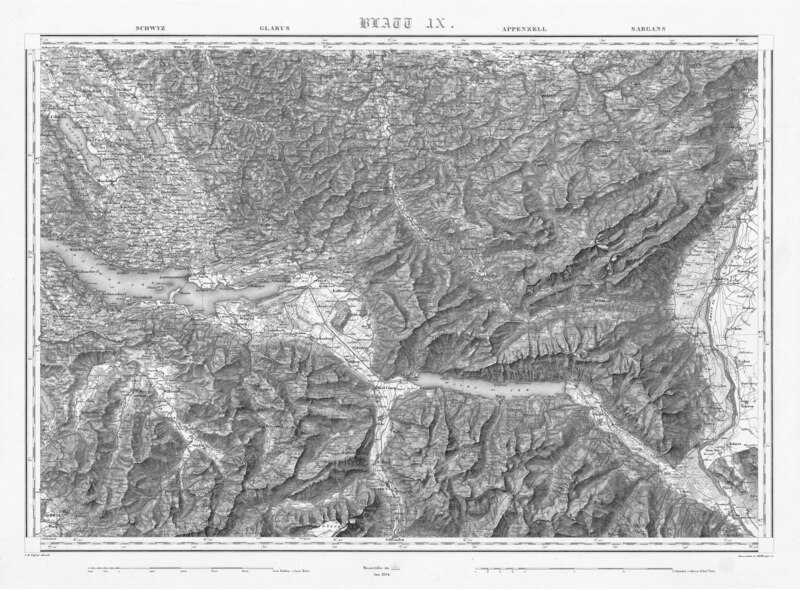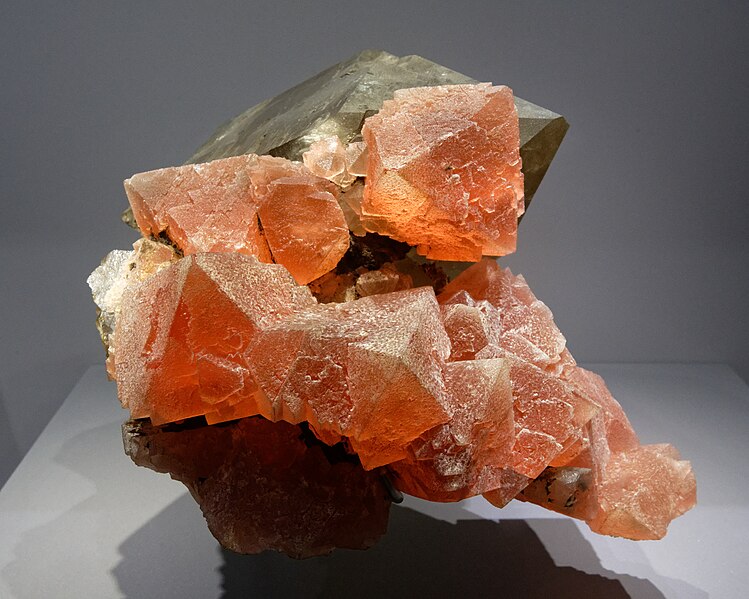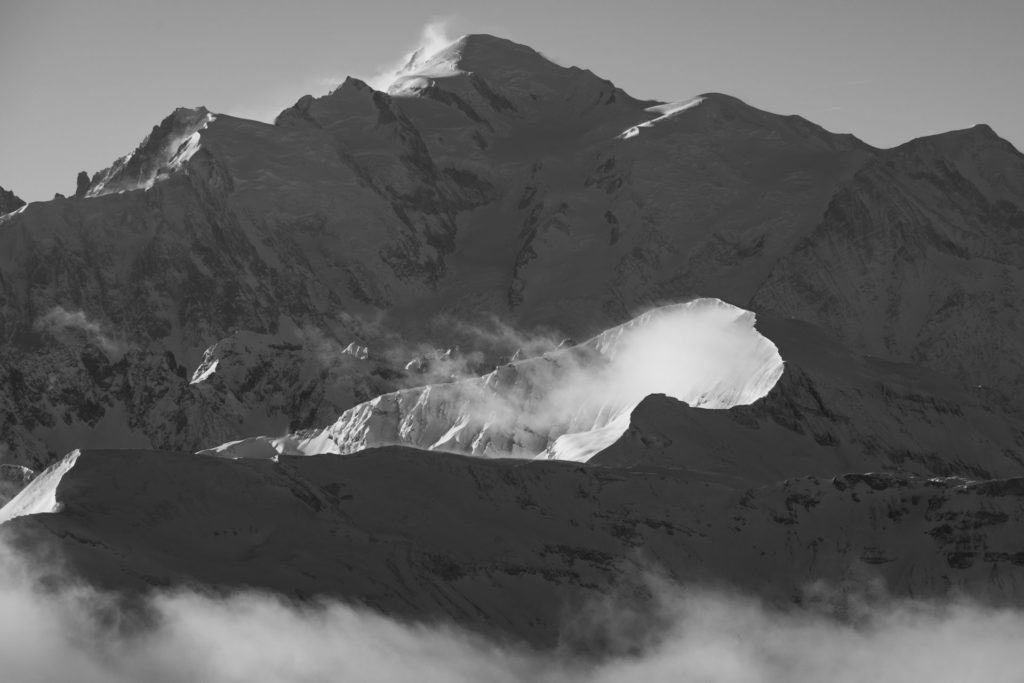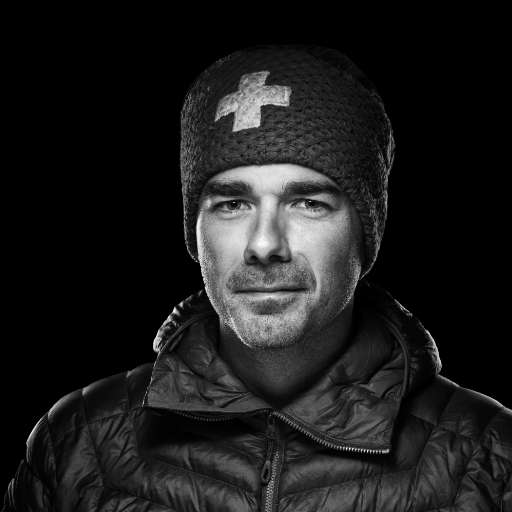Lionel Terray, a prodigious mountaineer with a legendary destiny, lives to the rhythm of the mountains and their titanic peaks. Nourishing his heart with the fragrance of the peaks, his body clings to the rock as if they were one. From the highest summits of the Alps to the eternal snows of the Himalayas, from the fabulous Andes to the ice of Alaska, he triumphs over the most perilous crossings. Portrait of an adventurer with an exceptional career, the mountaineer Lionel Terray, virtuoso conqueror of the high mountains.
Lionel Terray: Birth of an exceptional mountaineer in the French Alps
On July 25, 1921, in Grenoble, France, a star was born. A conqueror of heights, a dreamer of the useless. Lionel Terray grew up in a well-to-do family who saw a bright future for him. But far from the glamorous salons of bourgeois society, the child yearned for adventure. Defying the rules and risking the wrath of his parents and teachers, he played hooky from school to join summits. By the age of 3, he had mastered the art of skiing. At 5, he took up the challenge of climbing the rocks in the grounds of the family home. Despite injuries, he continues his quest. For nothing resonates more strongly within him than the call of the mountains.
He made his first ascents at the age of 11, before discovering Chamonix at the age of 12. The flamboyant Alps sealed the exceptional destiny of our mountaineer. He climbed the Aiguille du Belvédère, crossed the Mer de Glace and the Bossons glacier to reach the Couvercle refuge. From then on, Lionel Terray was up against the greatest. With his cousin, an officer at the École militaire de haute montagne, he climbed the Aiguille d'Argentière, the Brévent, the Grands Charmoz and the Petite Aiguille Verte. He was not yet 13 when he became a rope leader for the first time.
Portrait of mountaineer Lionel Terray: A lover of the Alps at the heart of war
World War II confirmed his visceral love of heights. From races to climbs, he devoted himself to the mountains with an all-consuming passion. He married Marianne, a schoolteacher, and set up farming in the Chamonix valley. During the winter, the numerous prizes he won in downhill skiing added to the farm's income, enabling him to make a living.
In May 1941, Lionel Terray joined the Jeunesse et Montagne military training program, where he met Gaston Rébuffat. Here he discovered a new, avant-garde and ambitious approach to mountaineering. Then, from November 1943 to August 1944, he joined the famous Compagnie Stéphane. This high-mountain military unit was staffed by the best mountaineers and skiers of the day. The experience was as demanding as it was enriching. The young Terray came back from the war stronger than ever, certain that his place was here, in the high mountains, on the slopes of the earth, as close to the sky as possible.
Lionel Terray and Louis Lachenal: a legendary team at summit in the Alps
The return of peace marks the moment when Lionel Terray takes to the skies. He became an instructor at the École de Haute Montagne and a ski instructor at ENSA (École nationale de ski et d'alpinisme). After a brief interlude in Quebec, where he coached the national ski team, he settled in the Alps in 1949 as a mountain guide. Lionel Terray valued his independence as a guarantee of his freedom. To reach the highest summits, alone against the winds, to traverse the peaks beyond frontiers. This is what he feels born to do, this is his sole reason for living. To free oneself through effort, demands and surpassing oneself. To be happy in contact with a vertiginous nature, flush with rock and eternal snow.
At the heart of the post-war era, a legendary rope party was born. Lionel Terray made his first runs with Louis Lachenal. Together, they triumphed over the most indomitable north faces. Together, they accomplished feats on the highest summits in the Alps. In 1946, they made the fourth ascent of the Droites North Spur in just 8 hours. No climber before them had conquered the mountain so quickly. They were also the fourth team to climb the north face of Grandes Jorasses via the Walker spur. In 1947, Lionel Terray and Louis Lachenal completed the first repetition of the Eiger North Face. From then on, the eyes of the world were riveted on their prodigies, and the two heroes rose to the rank of the most brilliant mountaineers of their time.
Lionel Terray, a courageous volunteer, also took part in several rescue operations in the high mountains. In the winter of 1956, he took part in the infamous rescue attempt of Jean Vincendon and François Henry. Accompanied by Walter Bonatti and Sylvano Gheser, the two men perished while climbing Mont Blanc via the Brenva spur. The ordeal was terrible, and in the face of criticism, Lionel Terray resigned for a time from the Compagnie des Guides de Chamonix. In August 1957, he repeated the experience, coming to the rescue of Italian mountaineers Claudio Corti and Stefano Longhi, who had both set off to climb the north face of the Eiger. History will remember his coolness and courage this time, thanks to Jack Olsen's account, The Climb Up to Hell, published in 1962.
Portrait of mountaineer Lionel Terray: From summit of Annapurna to the summit of Fitz Roy
The Alps shaped a legendary mountaineer. Now it's up to the world to pay tribute to his talent. Lionel Terray took off for the Himalayas in the spring of 1950. He was one of the heroes of the French expedition to Annapurna, the first ascent of a summit over 8000 meters high. Although the honors went to Maurice Herzog and Louis Lachenal, who reached the highest point of this gigantic mountain, Lionel Terray and Gaston Rébuffat devoted themselves body and soul to bringing them back alive. Lionel Terray's pivotal role in this celestial odyssey catapulted him to international prominence.
Lionel Terray's exploits took him from one continent to another. In the winter of 1952, he travelled to Patagonia to work with Guido Magnone on the first ascent of Fitz Roy, one of the world's most inaccessible mountains. The "Matterhorn of the Antipodes" rises to an altitude of 3405 metres on the border between Argentina and Chile. Mountaineers know that their difficulties will come not from the mountain, but from the wind. One storm follows another, and ice caves replace tents that give way to the fury of the elements. Leaving their doubts behind, and overcoming one by one the trials that nature had in store for them, Lionel Terray and Guido Magnone reached the summit of Fitz Roy on February 2, 1952. It was 4.40pm when their feet touched the ground summit. Drunk with happiness, they shouted their joy to the world. The Fitz Roy had been conquered.
Himalayas, Andes and Alaska: Lionel Terray, a mountaineer with a thirst for records
Lionel Terray is still thirsty for adventure. He aspires to more and more ascents and can only envisage his days at summit on the most grandiose peaks. That's where he feels alive, his heart vibrating to the rhythm of the rock, his mind soothing along the ice floes. And so he continues to defy the heights. In early summer 1952, he headed for Peru and the Cordillera Blanca with Dutch mountaineers Cees Egeler and Tom de Booy. Together, they made the first ascent of Nevado Pongos on July 7, and shortly afterwards of Huantsan via its north face.
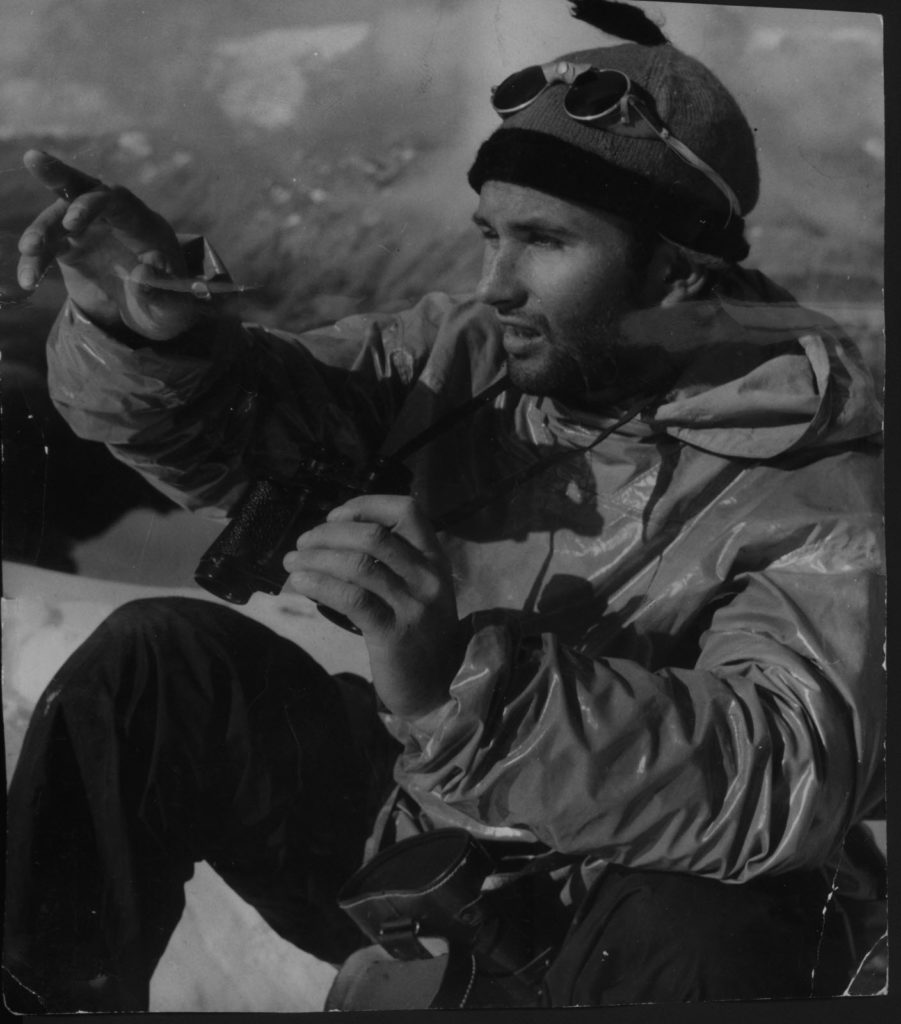
In 1954, Lionel Terray returned to the Himalayas. In October, he and Jean Couzy made the first ascent of Kangchungtse, or Makalu II, and Chomo Lonzo. Both rise to over 7,000 metres, on the border between China and Nepal. After having climbed these secondary summits of the Makalu massif, the team tackled its highest summit. 1955 was synonymous with victory for our conquerors of the peaks. The expedition led by Jean Franco successfully climbed Makalu on May 15 and 16, reaching an altitude of 8,485 metres.
How to satisfy the passion of this remarkable mountaineer? Lionel Terray never stops challenging the mountains. In perpetual effervescence, nothing seems able to stop him. How much longer will the high summits welcome him to their peaks? No one knows. But for now, the mountaineer returns to Peru to make the first ascent of Chacraraju in 1956. This was his victory over summit , the most impassable mountain in the Peruvian Andes. Rival expeditions, having forfeited before him, even described the climb as suicide. Then, as if his dazzling feat were nothing more than banal, he immediately set his sights on other records, making the first ascent of the extremely arduous Taulliraju on August 18, 1956.
In less than ten years, Lionel Terray has taken part in eight major expeditions to the world's highest summits . He has spent a cumulative total of over two years beyond the seas, and completed 180 climbs in the Alps. But the insatiable explorer has no intention of stopping there. When he once again reached the Himalayas in April 1962, he conquered Jannu before returning to South America.
Driven by the ardor of freedom, Lionel Terray then headed for northwest Alaska. He led a French expedition to summit on Mount Huntington. Faced with violent winds and treacherous avalanches, the expedition made difficult progress. Suddenly, exhausted by the onslaught of impetuous nature, Lionel Terray fell. His slight injury forced him to descend, but did not dampen his determination. An indomitable conqueror, he climbs back up to the summit of Mount Huntington. And, if you're tempted by the adventure, you can relive this spectacular ascent in the report devoted to him by the program Les Coulisses de l'exploit.
Lionel Terray: Legendary climber falls in the Vercors massif
But can man be invincible in the face of the elements? What are his feats if not chimeras in the face of the mountain's omnipotence? On September 19, 1965, bravery turned to dust and passion turned to wind. In the Vercors massif, Lionel Terray fell to his death while climbing the Gerbier ridge with his friend Marc Martinetti. He was 44 years old. Who could claim to be stronger than the mountain? A few seconds' carelessness, a clumsy mistake, and the merciless forces of nature step into the breach. An unfortunate decision, extreme conditions and the mountain wins the day.
Lionel Terray is done with records and far-flung expeditions, but he can't live without crabbing, climbing and exploring. On September 18, he left Chamonix to reach the heights of the Vercors before heading to Grenoble for business meetings. The climb seemed child's play for a virtuoso like him. But as the days passed, the silence grew deafening. Marianne, his wife, raises the alarm and the search begins. Lionel Terray and Marc Martinetti were officially reported missing.
At around 10:45 pm, after hours of exploration, rescuers finally discovered the bodies of the climbers at the start of the Fissure en arc de cercle route. Entangled in their ropes, their vertiginous fall had left them no chance. The terrible news spread over the airwaves. Lionel Terray is dead. The world was stunned and remembered. Giving in to the Vercors where he grew up. The place of his first hikes, the breeding ground of his wildest dreams. The mountain has taken its toll on his beloved son.
The climbers were spotted alive at around 5pm, but at 6:30pm their watches stopped. What happened then? The mystery remained unsolved until October. The investigation concluded that it had been a tragic accident. A piece of rope found under a rock suggested that, when it broke loose, it had cut the rope holding them together. Lionel Terray and Marc Martinetti fell to their deaths.
In Prélenfrey, a chapelle ardente allows everyone to come and pay their respects to the bodies of the mountaineers. Maurice Herzog, then Secretary of State for Youth and Sport, came to pay his last respects to his friend and support his wife. An emotional Roger Frison-Roche was devastated. The media was full of praise for Lionel Terray's exceptional achievements and legendary courage.
On September 25, 1965, Chamonix was in mourning. Crowds flocked to the funeral, and then it was time for the final journey. Carried by guides from Chamonix, the coffins make their way to the cemetery, followed by an interminable procession. Families, friends and officials - everyone is there to accompany them. Heartbroken Gaston Rébuffat, James Couttet, Maurice Herzog and Roger Frison-Roche can all be seen there. A page in the history of mountaineering was turned before the moving eyes of Alpine lovers. Two years later, a plaque was unveiled at the foot of the Gerbier, in the presence of Lionel Terray's wife and children. It reads: "On September 19, 1965, Marc Martinetti and Lionel Terray attacked the Gerbier near here, their last race. On the evening of that joyous day, they found eternal peace."

Portrait of Lionel Terray: high-mountain star and conqueror of the useless
Lionel Terray left an indelible mark on the world far beyond the Alps and the high mountains. Named Officer of the Legion of Honor in 1963, he was awarded the Croix de Guerre 1939-1945, the médaille d'honneur for acts of courage and devotion, and the médaille d'or de l'éducation physique et des sports. But he also made the high mountains shine in everyone's eyes. A director of mountain films, he played the role of guide in Marcel Ichac's 1958 film Les étoiles de midi.
Lionel Terray is also the author of one of the most famous mountaineering stories. In 1961, his book Les conquérants de l'inutile was published by Gallimard. And if pictures are more appealing than words, you'll love the film adaptation of this must-read adventure story. In 1967, Marcel Ichac released his film, Le conquérant de l'inutile.
Born at the foot of the Alps, a former ski champion, professional guide, mountaineer, member of eight expeditions to the Andes and Himalayas, I've devoted my whole life to the mountains, and, if that word has any meaning, I'm a mountain man. This is how Lionel Terray portrays him in his book, Les conquérants de l'inutile. History will remember him as a great man who loved the most beautiful adventures.


